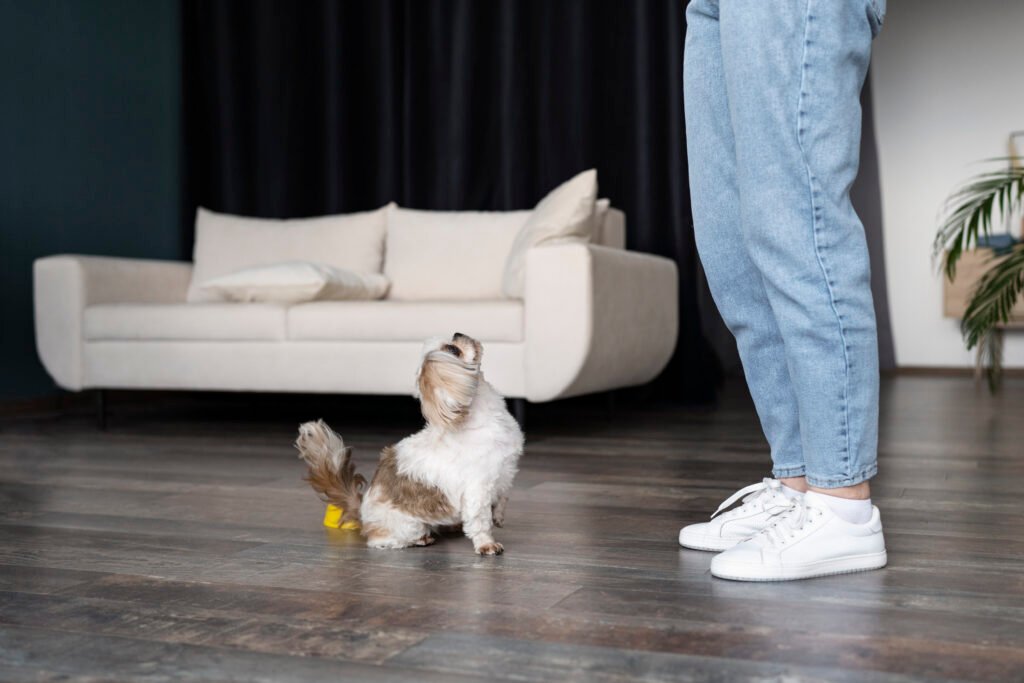Puppy Pee Pad Training 101: Everything You Need to Know
- Get link
- X
- Other Apps
Puppies bring immense joy into our lives, but along with the cuddles and playtime comes the responsibility of training them, especially when it comes to potty training. For many pet owners, puppy pee pad training offers a convenient solution to the challenge of indoor potty training. In this comprehensive guide, we will delve into the ins and outs of puppy pee pad training, equipping you with the knowledge and strategies needed to successfully navigate this important aspect of puppy care.

Why Puppy Pee Pad Training?
Puppy Pee pad training provides an effective and convenient solution for indoor potty training, particularly for those living in apartments or areas with limited outdoor space. These absorbent pads offer a designated spot for your puppy to relieve themselves, minimizing accidents and making cleanup easier. Additionally, pee pad training can be particularly beneficial during inclement weather or for puppies too young to venture outdoors.
Getting Started
Choosing the right pee pads is crucial for successful training. Opt for pads that are appropriately sized for your puppy and feature leak-proof backing to prevent accidents from seeping through. Next, select a suitable location in your home for the pee pads, preferably a quiet and easily accessible area. Introduce your puppy to the pads gradually, using positive reinforcement to encourage them to use the designated spot.
Establishing a Routine
Consistency is key when it comes to puppy pee pad training. Set a regular feeding schedule for your puppy, which will help regulate their bathroom breaks. Encourage your puppy to use the pee pads after meals, naps, and playtime, praising and rewarding them for successful eliminations. Consistent reinforcement of the desired behavior will help solidify the training process.
Positive Reinforcement Techniques
Positive reinforcement is a powerful tool in puppy training, including pee pad training. Use verbal praise, treats, and affection to reward your puppy for using the pee pads correctly. Be patient and consistent in your approach, avoiding punishment for accidents as this can lead to anxiety and setbacks in training. Remember, training should be a positive and rewarding experience for both you and your puppy.

Handling Accidents
Accidents are an inevitable part of the training process, so it’s essential to handle them calmly and effectively. When accidents occur, clean up the mess promptly using an enzymatic cleaner to eliminate odors and discourage repeat incidents. Avoid scolding or punishing your puppy for accidents, as this can create fear and confusion. Instead, focus on reinforcing the desired behavior and remaining patient throughout the training journey.
Troubleshooting Common Challenges
While puppy pee pad training is generally straightforward, you may encounter some challenges along the way. If your puppy shows resistance to using the pee pads or exhibits territorial marking behaviors, remain patient and persistent in your training efforts. Seek advice from a professional trainer or veterinarian if you encounter persistent difficulties, as they can offer personalized guidance and support.

Gradual Transition to Outdoor Training
As your puppy grows and becomes more accustomed to using the pee pads, you can begin the transition to outdoor potty training. Encourage your puppy to use outdoor potty areas by gradually moving the pee pads closer to the door and eventually eliminating them altogether. Celebrate milestones and progress in your puppy’s training journey, recognizing their achievements and reinforcing positive behaviors.
Conclusion
Puppy pee pad training requires patience, consistency, and positive reinforcement, but with the right approach, it can be a rewarding and successful experience for both you and your furry companion. By following the tips and strategies outlined in this guide, you can master puppy pee pad training and set your puppy up for a lifetime of good potty habits. Remember, every puppy is unique, so be patient and adaptable in your training approach, and above all, enjoy the journey of bonding with your new four-legged friend.
FAQS
Q: What is puppy pee pad training?
A: Puppy pee pad training is a method of teaching young dogs to relieve themselves indoors on absorbent pads, rather than on floors or carpets. This approach is particularly useful for pet owners living in apartments or in areas with limited outdoor access.
Q: How do I start puppy pee pad training?
A: To start puppy pee pad training, select a designated area in your home for the pee pads and introduce your puppy to them gradually. Use positive reinforcement, such as treats and praise, to encourage your puppy to use the pads. Establish a consistent routine for feeding and bathroom breaks to reinforce the training process.
Q:Are there specific pee pads I should use for training?
A: When selecting pee pads for training, look for options with leak-proof backing to prevent accidents from seeping through. Choose pads that are appropriately sized for your puppy and absorbent enough to contain liquid effectively. It’s also helpful to opt for pads with attractant scents to encourage your puppy to use them.
Q: How long does it take to train a puppy to use pee pads?
A: The duration of puppy pee pad training can vary depending on factors such as your puppy’s age, breed, and individual temperament. While some puppies may learn quickly within a few weeks, others may require more time and patience. Consistency, positive reinforcement, and a structured training routine are key to achieving success.
Q: Can puppy pee pad training be transitioned to outdoor potty training?
A: Yes, puppy pee pad training can be gradually transitioned to outdoor potty training as your puppy grows and becomes more accustomed to using the pads. Start by moving the pee pads closer to the door and eventually eliminate them altogether once your puppy consistently goes potty outside. Be patient and supportive during the transition process, and continue to reinforce positive behaviors.
- Get link
- X
- Other Apps
Comments
Post a Comment